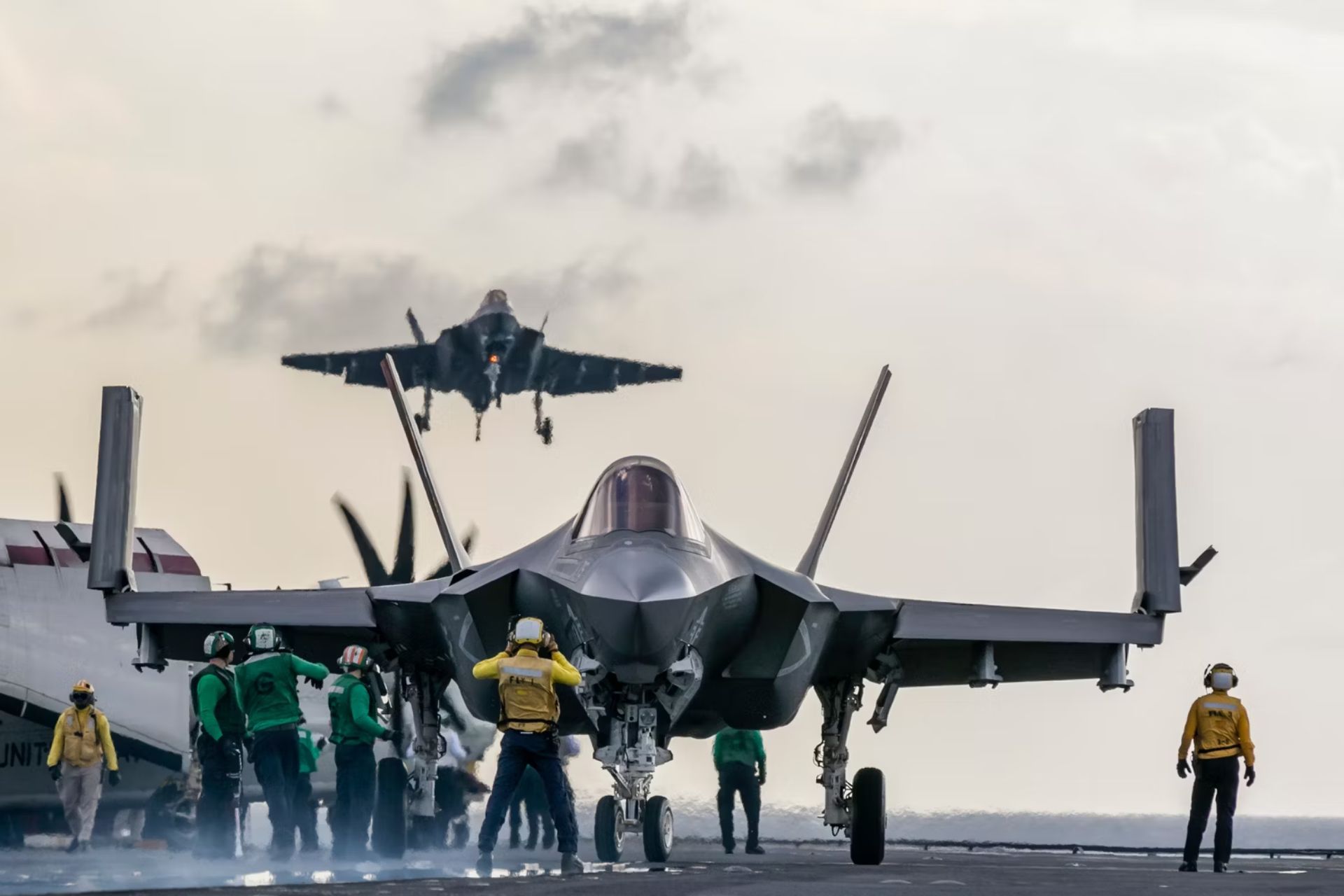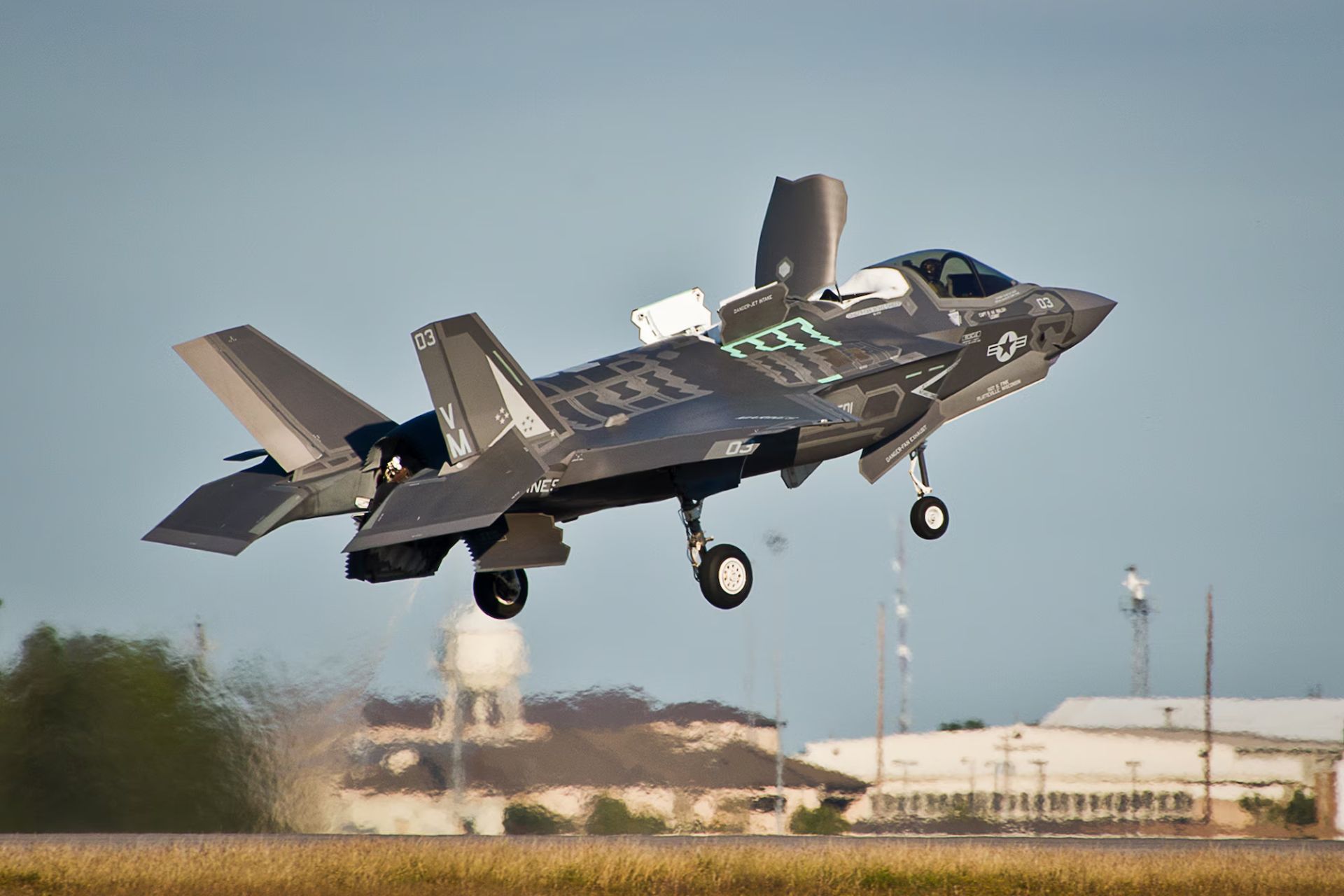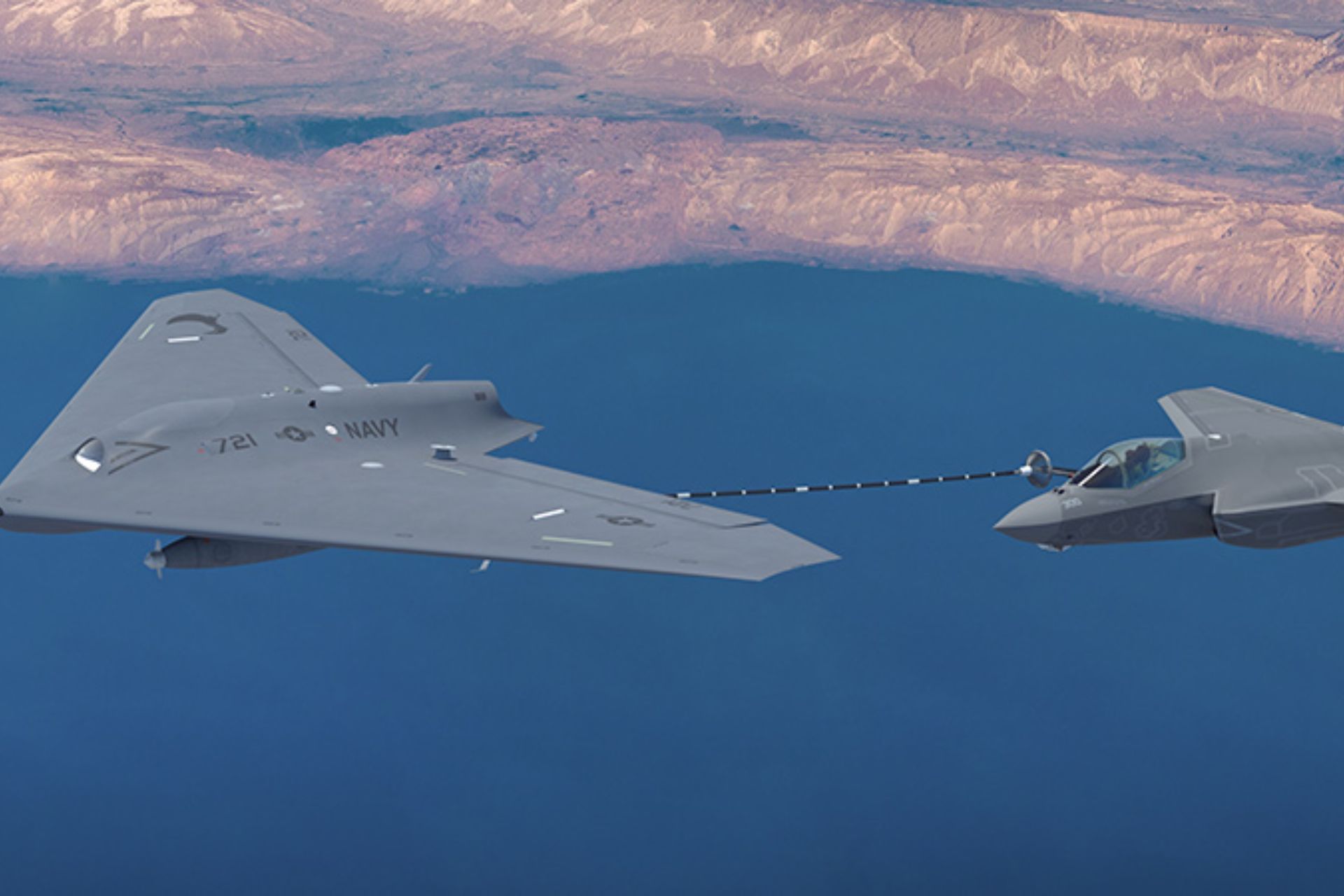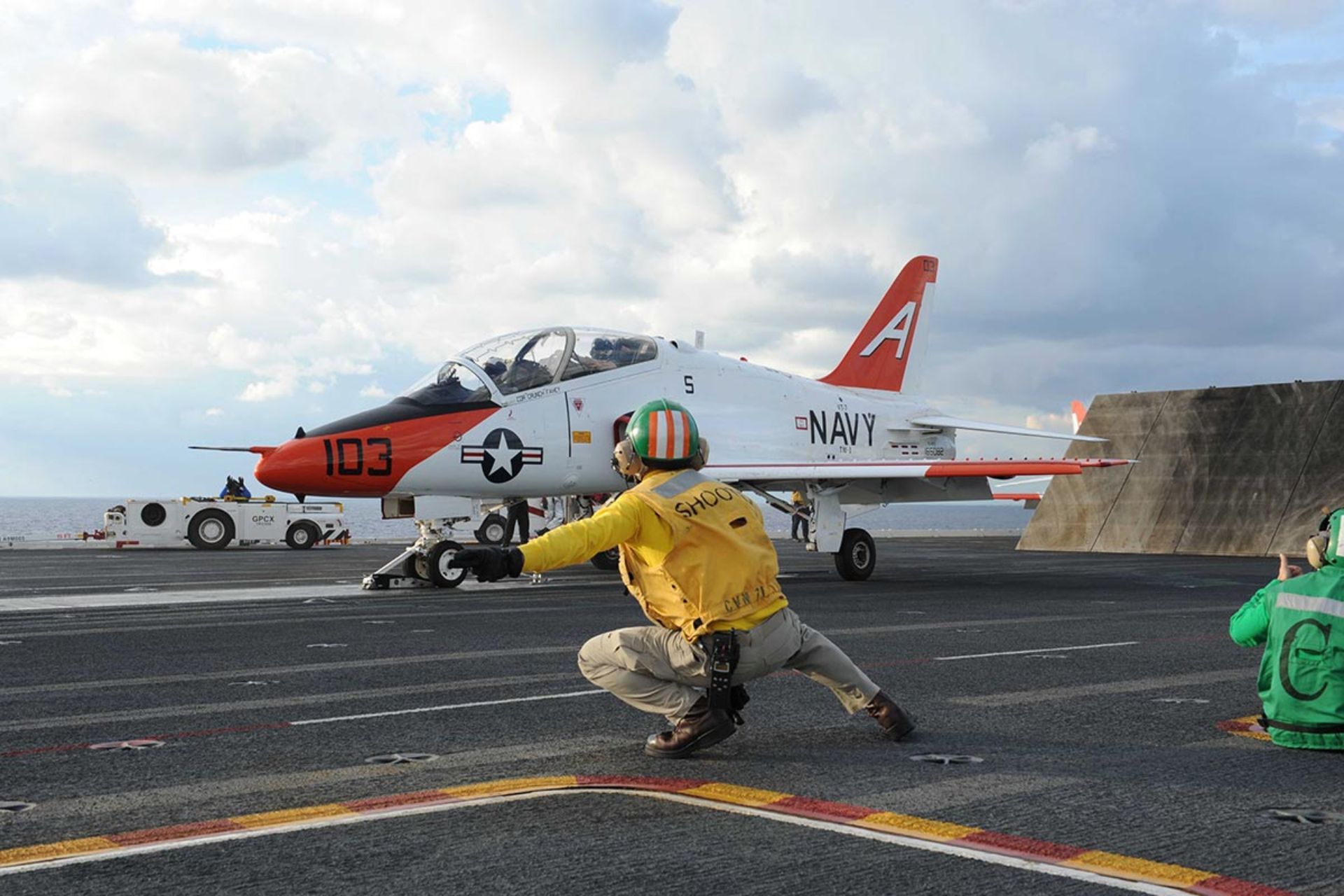Breaking News
FOCUS| Which Aircraft Are US Navy & Marines Buying In 2025 Budget?.
The U.S. Navy, along with the Marines, is arguably the second most powerful air force in the world (after the U.S. Air Force). It has around 3,300 non-drone and training aircraft. Its combat fleet includes some of the most advanced fighter jets in the world, such as the F-35 stealth fighter, the F/A-18 Super Hornet, and the EA-G Growler. But what aircraft are the Navy and Marines planning to purchase during the 2025 fiscal year? Meanwhile, the U.S. Senate has allocated an additional $3.4 billion to the Air Force to buy more aircraft.
Follow Army Recognition on Google News at this link

Lockheed Martin F-35C aboard the USS George Washington(Picture source: Lockheed Martin)
Navy Budget for 2025
On March 11, the Department of the Navy (which includes the Marine Corps) requested a budget of $16.2 billion for the total purchase of aircraft. Like the Air Force, the Navy's air fleet is expected to shrink in the future. While it plans to purchase only 76 aircraft, the combined service plans to retire 123 aircraft during the 2025 fiscal year.
The Force Structure Changes Report for the 2025 Defense Budget states that the Navy Command plans to retire 123 aircraft during the 2025 fiscal year, resulting in a total operational savings of $362.9 million for the 2025 fiscal year. Of these, 75 aircraft are from the Navy (with $203.5 million in operational savings for the 2025 fiscal year) and 48 are from the Marine Corps (with $159.4 million in operational savings for the 2025 fiscal year).
The U.S. Navy's total aircraft purchases will decrease during the 2025 fiscal year compared to the previous year's request. This is mainly due to more modest purchases of Lockheed Martin F-35B and F-35C variants, which are replacing the existing fleets of Harrier jets and F/A-18 Hornets. The Marines are expected to retire the AV-8B Harrier II jet by the end of 2026, as the F-35B STOVL jets will replace them.
The Senate Appropriations Committee has approved the Defense Appropriations Bill for the 2025 fiscal year. The bill allocates $81.2 billion for purchases and $26.2 billion for research and development for the Navy. As a maritime service, the Navy spends a significant portion of its budget ($37 billion) on shipbuilding. This includes nearly a billion dollars ($954 million) for the development of the Navy's next-generation fighter.

Marine F-35B joint strike fighter lifts off from the runway during the first short take-off and vertical landing mission at Eglin Air Force Base, Fla., Oct. 25. ( Picture source: US Air Force)
Planned purchases by the Department of the Navy for the 2025 fiscal year
The Department of the Navy proposes to acquire 75 aircraft during the 2025 fiscal year. This includes 13 F-35B Lightning II fighter jets for the Marine Corps and 13 F-35C Lightning II fighter jets for the Navy (though the Appropriations Committee later requested the acquisition of 19 F-35Cs for the Navy). The U.S. Navy and Marines are gradually certifying their aircraft carriers and amphibious assault ships to operate the F-35C and F-35B, respectively.
The Navy's proposal includes the acquisition of 19 CH-53K King Stallion heavy-lift helicopters for the Marine Corps. The King Stallion first flew in 2015 and is an evolution of the CH-53 helicopter series, which has been in continuous service since 1966. Lockheed states, "The CH-53K helicopter was designed and built to the rigorous standards of the United States Marine Corps (USMC) and will serve as a critical logistics connector on land and at sea." The Marine Corps plans to eventually acquire a total of 200 of these helicopters.
The U.S. Navy is requesting 27 T-54 multi-engine training aircraft and three MQ-25A Stingray unmanned aerial refueling aircraft. The MQ-25A Stingray is a newly developed refueling drone, derived from the Carrier-Based Aerial-Refueling System (CBARS) program. It made its first flight in 2019, and the U.S. Navy plans to acquire a total of about 76 Stingrays.
The T-54A will replace the aging T-44C and is expected to be in service for 30 years. According to the Navy, its mission is to "ensure that multi-engine and tiltrotor aviators have an advanced platform that best represents fleet aircraft and equips them for tomorrow's battlespace." The T-54A is the military designation for the Beechcraft King Air Model 260.

MQ25-A stealth refueling drone based on Lockheed Martin's design, here refueling an F-35C ( Picture source: Lockheed Martin)
Buy or Take Delivery
Notable aircraft that are not on the Department of the Navy's purchase list include aircraft such as the F/A-18E/F Super Hornet fighter jets, EA-18G Growler electronic attack aircraft, E-2D Advanced Hawkeye radar warning aircraft, MH-60R/S helicopters, MV-22B and CMV-22B Osprey transport aircraft, AH-1Z Viper and UH-1Y Venom helicopters, P-8A Poseidon maritime patrol aircraft, MQ-4C Triton and MQ-9A Reaper unmanned surveillance aircraft, and TH-73A Thrasher training helicopters.
It appears that funding for these platforms has been completed, and deliveries of some of them are ongoing. For example, Super Hornets, P-8A Poseidons, E-2D Advanced Hawkeyes, Ospreys, and other aircraft are still on order. Some of them will be received during the 2025 fiscal year. The Navy has already placed what should be the final order for the Super Hornet, with the last deliveries expected to be completed by 2027. After that, the production line will close.
In the future, the Navy plans to purchase T-45 Goshawk training aircraft, a version of the C-130J Super Hercules to replace the E6B Mercury aircraft, and the KC-130J Super Hercules.

A catapult officer "Shooter" gives the go signal for the T-45 "Goshawk" trainer jet to launch from the flight deck of USS Theodore ROOSEVELT ( Picture source: US NAVY)


























